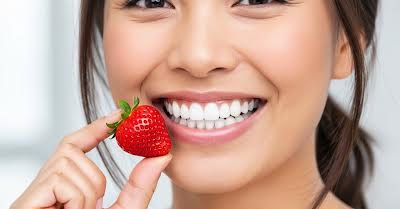Teeth Whitening Insights: Practical Guide, Helpful Tips, and Informative Explanation
Teeth whitening is a process designed to lighten the natural shade of teeth and remove discoloration caused by food, drinks, smoking, aging, or other lifestyle factors. It is one of the most recognized aspects of oral care, blending health and aesthetics. Over time, teeth naturally lose brightness due to enamel wear and exposure to stains, making whitening techniques an important topic in dental health discussions.
The practice exists to restore confidence, impr
The practice exists to restore confidence, improve oral appearance, and contribute to overall self-care routines. Teeth whitening is not just about beauty but also about maintaining oral hygiene awareness, as it often goes hand-in-hand with better dental care practices.

Importance – Why Teeth Whitening Matters Today
In modern life, appearance and oral health are closely linked. A bright smile can influence social interactions, professional settings, and self-esteem. The importance of teeth whitening lies in its ability to address these aspects effectively.
Why it matters today:
-
Increases confidence in personal and professional life.
-
Helps reduce visible effects of aging on dental appearance.
-
Enhances oral hygiene awareness and encourages better brushing habits.
-
Offers solutions to common issues like stains from coffee, tea, or wine.
Who it affects:
-
Adults seeking to restore brightness lost with age.
-
Younger individuals exposed to lifestyle-related discoloration.
-
People with special occasions like weddings, public speaking, or interviews.
Teeth whitening helps solve the widespread problem of tooth discoloration while promoting better oral hygiene practices.
Recent Updates – Trends and Developments (2024–2025)
The field of teeth whitening continues to evolve with new research, technology, and safe oral care products. Recent updates highlight the importance of effectiveness and safety.
-
Natural whitening ingredients – Charcoal, baking soda, and coconut oil are increasingly used in whitening pastes and powders in 2024.
-
Low-sensitivity formulas – By 2025, more brands are introducing options that reduce tooth sensitivity while still improving brightness.
-
LED-assisted whitening – Light technology is gaining popularity for faster results, especially in professional and home-use devices.
-
Focus on enamel health – Innovations in 2024–2025 emphasize not just whitening but also protecting enamel from erosion.
-
Eco-friendly oral care – Sustainable packaging and natural formulations are becoming more common in the oral care industry.
| Year | Trend | Key Focus |
|---|---|---|
| 2023 | Rise of natural ingredients | Safer alternatives to chemicals |
| 2024 | LED whitening kits | Faster and more accessible results |
| 2024 | Sensitivity-friendly pastes | Comfort-focused oral care |
| 2025 | Enamel-protection focus | Dual benefit of whitening + strengthening |
| 2025 | Eco-conscious products | Aligning oral care with sustainability |
Laws or Policies Affecting Teeth Whitening
Teeth whitening practices are influenced by health regulations, dental guidelines, and product safety standards. These laws ensure consumer protection and effective results.
Regulation of whitening products
-
Many countries set maximum levels for bleaching agents such as hydrogen peroxide to ensure safe use.
-
Products must comply with local health authority approvals before being marketed.
Professional standards
-
Dental associations provide guidelines for safe whitening methods.
-
Countries like the UK and EU regulate higher-concentration whitening treatments to be performed under professional supervision.
Advertising and claims
-
Oral care products must avoid misleading promises.
-
Compliance with truth-in-advertising policies is required globally.
Accessibility standards
-
Labels must include proper directions, warnings, and suitability notes for individuals with sensitive teeth or dental conditions.
Tools and Resources for Teeth Whitening
Several tools and resources can help individuals explore whitening methods safely and effectively.
Whitening toothpaste and powders
-
Contain mild abrasives or natural agents for gradual stain removal.
Whitening strips and gels
-
Popular options for at-home use, applied directly to teeth for set durations.
LED whitening devices
-
Enhance the effect of gels and provide quicker results.
Oral care apps and trackers
-
Digital tools that remind users of brushing schedules and track progress.
Educational resources
-
Websites of dental associations, oral health blogs, and scientific publications provide insights and comparisons of whitening methods.
| Category | Examples |
| Daily Use | Whitening toothpaste, natural powders |
| At-Home Kits | Whitening strips, LED devices |
| Professional Options | Dentist-supervised whitening methods |
| Digital Tools | Oral care apps, timers, reminders |
| Learning Resources | ADA, NHS, Mayo Clinic websites |
FAQs About Teeth Whitening
Is teeth whitening safe for everyone?
Teeth whitening is generally safe when products are used according to instructions. However, people with sensitive teeth, gum disease, or dental restorations should consult a professional before using whitening products.
How long do whitening results last?
Results vary depending on lifestyle and diet. Typically, whitening effects last from several months to a year with proper care and maintenance.
Do natural methods really work for whitening teeth?
Some natural agents like baking soda can help reduce surface stains, but they may not be as effective as peroxide-based methods. They are best used as supportive care.
Can whitening damage tooth enamel?
When used correctly, most whitening methods are safe. Overuse or misuse of strong bleaching agents can weaken enamel, so following guidelines is important.
What habits should be avoided after whitening?
Limiting coffee, tea, red wine, and smoking helps maintain results. Good brushing and flossing habits extend the longevity of whitened teeth.
Conclusion
Teeth whitening remains a key part of oral care that combines health, confidence, and appearance. With trends emphasizing safety, natural solutions, and enamel protection, it continues to grow in importance. By understanding available methods, following regulations, and using the right tools, individuals can make informed choices about improving their smiles. The future of teeth whitening lies in balancing innovation with oral health awareness, ensuring brighter smiles without compromising dental safety.